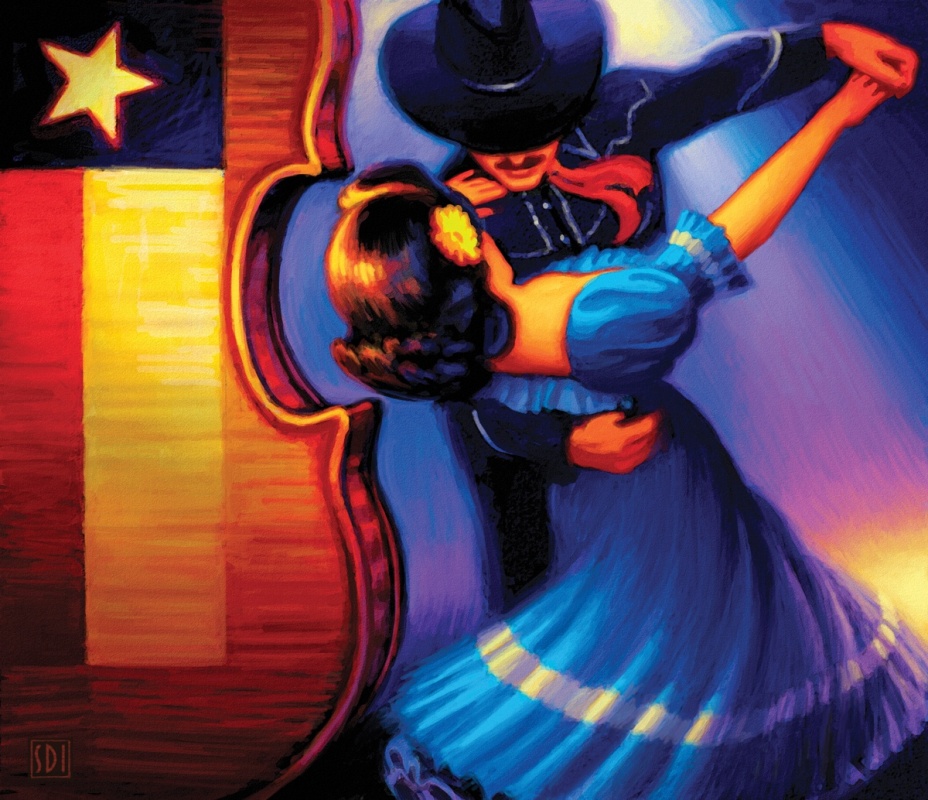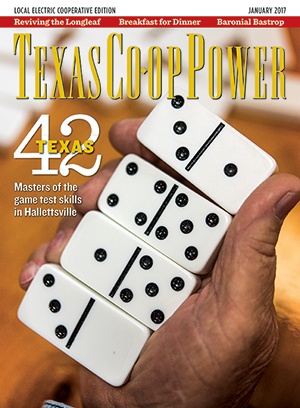One of the shortest state highways in Texas, SH 320, passes through the Falls County town of Westphalia, where you’ll find one of the oldest wooden churches in the state, the Church of the Visitation. The first families to settle there came from Westphalia, Germany, in 1879 and named their new home to honor the old homeland.
They finished building a church in February 1884 but received a harsh lesson in Texas weather when a storm blew it down in May. The lessons learned are on display in the current structure, built in 1895 and featuring high, distinctive twin bell towers, each built to accommodate 6 inches of sway.
Those first families were farmers, as are most of the area’s present families, and they learned to reckon with the weather. In October 1906, they held the first homecoming and picnic as a way to celebrate the harvest, feast on the bounty and enjoy some music. People in Westphalia have always liked their music.
If you’ve heard of Westphalia, it’s probably not because of the highway, the church or even the homecoming and picnic, which is still going strong 110 years later and draws almost 5,000 people every fall. If the name rings a bell at all, it’s probably in connection with the old fiddle classic, the Westphalia Waltz.
Cotton Collins, a fiddler with the Lone Star Playboys, heard the tune when he was in Germany with the Army during World War II. The melody followed him back to Texas, where Collins transcribed it for the fiddle and called it the No Name Waltz.
Collins played the song with the Lone Star Playboys, but he didn’t name that tune until 1946 after a gig at Westphalia Hall. The band was meeting with hall manager B.J. Lignau to divvy up the evening’s proceeds when Collins remarked that the crowd sure liked his No Name Waltz. Lignau suggested he call it Westphalia Waltz. The song was a bona fide hit when Blue Bonnet Records, a fledgling Dallas label, released it in 1947. The great Texas fiddle master Johnny Gimble played with the band in 1948, and Gimble’s version is the one we hear most often today—but Collins got the copyright.
The Lone Star Playboys’ popularity waned in the late ’40s, but the band re-mained popular in Central Texas well into the ’50s. The band’s final recordings, on the Everstate Records label, were under bass player Charlie Adams’ name. He had a minor 1953 novelty hit, Hey, Liberace, for Columbia Records.
I didn’t know any of this until I spent an afternoon with the late Helen Lignau, B.J. Lignau’s daughter-in-law, at the Little School Museum and Covenant in Westphalia several years ago while working on a story for the Temple Daily Telegram. The museum has a Westphalia Waltz display featuring sheet music, a fiddle, a copy of the original Blue Bonnet recording and photos of the band. Most of the information for this story came from Lignau after I asked her what she knew about the song and the band.
She walked me over to the display and pointed to a picture of the Lone Star Playboys, all of whom she knew as a little girl, and rattled off the names of Pee Wee Truehitt, lead singer Hamlet Booker and his brother Morris—who wrote lyrics for Westphalia Waltz that never really caught on—and banjo player Vince Incardona.
Another picture showed steel player Lefty Nason, who joined the Lone Star Playboys in 1947 and supplied the band with its other well-known song, Steel Guitar Bounce.
“Lefty was a Yankee,” Lignau marveled, shaking her head at the very thought. “He was from New Jersey or some place. I don’t know how he ever got in the band.”
Filmmaker Joe Weed interviewed Lignau a few years after I did, and, beginning in 2006, embarked on a five-year journey to find the origins of Westphalia Waltz. His 2011 documentary, The Waltz to Westphalia, reveals that a Texas fiddle classic named to honor a small Texas town named to honor a German province is actually a Polish folk song.
Weed also discovered that Collins and the Lone Star Playboys weren’t the first musicians to adapt and record the song. The Walter Fronc Orchestra recorded it under one of the song’s Polish titles, Pytala Sie Pani, for RCA Victor in 1930. Polish violinist Ignacy Podgorski recorded it for Columbia Records seven years later.
And, according to Weed’s research, a fiddler from Bremond brought the tune from Chicago to Texas in the late 1930s, almost a decade before the Lone Star Playboys recorded their hit version.
In the end, Westphalia Waltz is too universal a tune to belong to just one town or one performer. Like all great music, it belongs to the whole world.
——————–
Clay Coppedge, a member of Bartlett EC, lives near Walburg.


